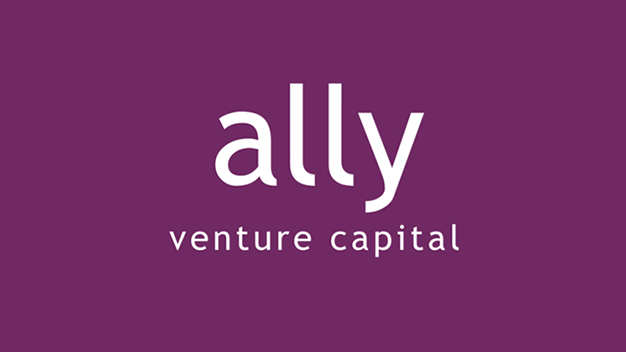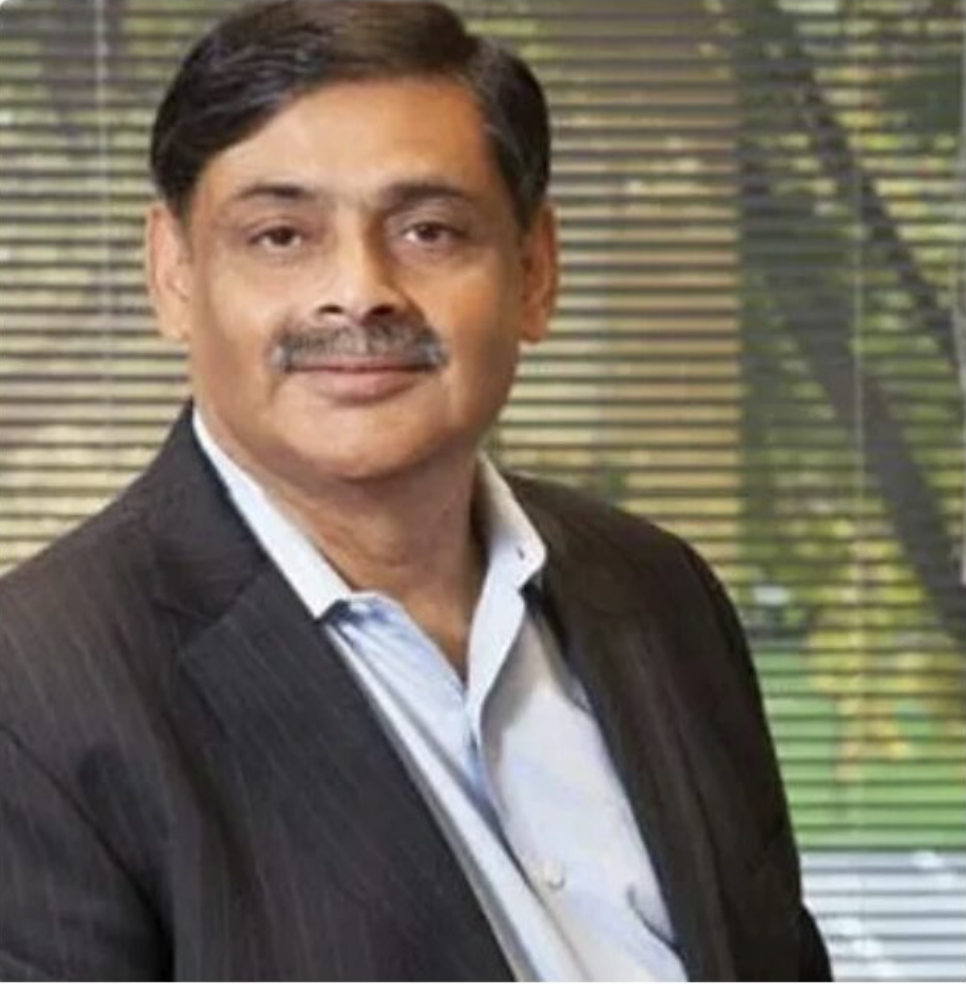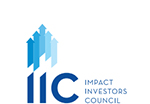|
Catalysing Capital for Impact
Dialogue with Arun Gore & Shashaank Awasthi,
Ally Venture Capital
|
|

1 Even as we witness the emergence of startups focused on disability-tech, disability and assistive technology in India is yet to receive mainstream investor attention.
In this context, as a unique venture capital firm, focused on disability inclusion, could you share with us your inspiration behind Ally Venture Capital? How are you approaching your investment strategy?
|
Raising a disability focused fund reflects our commitment to true-blue impact investing and is a natural extension of our experience in impact investing at Gray Ghost Ventures and disability inclusion at v-shesh. Our investments (bKash, Movirtu m-Kopa etc) are examples of the opportunity to build large scale profitable businesses by building for and serving deeply excluded consumer segments. Disability inclusion as a sector today is quite similar to where impact investing was a few decades ago and we expect tech, social and regulatory changes acting as tailwinds for startups in this space.
As investors - our thinking is deeply influenced by social model of disability which believes that barriers in our physical, digital, informational and social environments hold back persons with impairments to participating as equals. This model is respectful towards Persons with Disabilities by treating them as equals while bringing attention to the urgent need to eliminate disabling barriers in accessing physical spaces as well as digital (websites/ apps) and social environments (such as stigma around mental illness/ disability). As a lens to identifying how deeply Persons with Disabilities are underserved it points to both (1) lack of access to suitable assistive products and (ii) inaccessible public spaces, learning environments, digital infrastructure etc.
In line with this approach, our investments will be in area of individual use (assistive products, services in rehabilitation and therapy and solutions in sectors like education, skilling etc) and products, services and platforms that use principles of universal design to make our environments accessible for all users. As early stage institutional investors we hope to partner with outstanding founders in building companies that serves a large number of excluded/ underserved consumers while delivering solid financial performance.
|
2
It is perceived that commercializing disability-focused solutions in India is challenging, as disabled individuals are not viewed as paying customers. What is your take on this?
What are some of the innovations you are coming across that have the potential for both - market scale and commercial viability?
|
At 15% of world’s population - Persons with Disabilities are the world’s largest minority and a diverse group with varying needs and preferences. While recognizing that poverty and disability are inter-related it is important to remember that Persons with Disabilities are part of all income groups (think ageing!). That disabled consumers do not have the willingness or capacity to pay is a lazy stereotype similar to what we had about consumers from low/ middle income communities in early days of impact investing. This stereotype is a result of Persons with Disabilities having been long projected as beneficiaries of charities that lack agency, education and financial capacity. It also clubs Persons with Disabilities across age, gender, education and socio-economic strata as one homogenous group which is obviously deeply flawed as it almost always excludes even amongst them that have invisible disabilities (74% persons with disabilities do not use a device that may signal their impairment).
About incomes - ILO estimates that Persons with Disabilities globally represent USD 1.2 trillion in annual disposable income which is a very large number for any market segment. Closer home, India’s National Sample Survey 76th round mentions that a family with one person with disability has out of pocket expenses relating to disability of INR 37k/ USD 450 annually (in 2018). Adjusted for inflation USD 450 will be a higher number in 2024 and while even that may not be very large, it reflects the costs that families are already bearing in turn reflecting capacity to pay.
The economic opportunity in disability inclusion is one of market expansion in form of consumers that are Persons with Disabilities as well as those with similar needs (example seniors or for those recovering from an accident/ illness). Businesses working in the area of making environments accessible and inclusive serve significantly larger consumers than Persons with Disabilities.
An example of innovation/ solution is Louie Voice (founded by Pramit Bhargava) which is a solution that enables voice controls for apps making them accessible for persons with visual impairments. As financial services providers (Banks, Mutual Funds etc) started to adopt Louie Voice they found a host of other use cases and consumers wanting to use voice as an interface. Adoption of Louie Voice by mainstream financial services providers is an evidence of user acceptance and pathway to commercial success.
|
3
In the recent past, we've seen investments in enterprises like Butterfly Learnings (providing developmental therapy for children) and Thinkerbell Labs (offering braille devices to make education inclusive for the visually impaired). These solutions cater to the needs of Persons with Disabilities while also addressing healthcare and education outcomes.
a) In your view, is there an untapped opportunity for investors to build an investment thesis around disability atop existing investment approaches for healthcare and education?
b) If yes, what are some considerations that potential investors need to be mindful of, while building an investment thesis?
|
Persons with Disabilities are consumers with needs across all domains of living in just the same way as Persons without Disabilities. Environments that do not account for all users are inaccessible and leave gaps in the market space which startups in the disability space are now addressing. Materials should be accessible to all users irrespective of whether they access them visually or in a different format like Braille or voice. Areas like Neurodivergence, mental health which have historically received next to no attention are now being discussed openly with committed entrepreneurs pursuing opportunities to build for these segments.
To your question about an untapped opportunity - just like geographic expansion serving persons with disabilities and their families is a smart market expansion strategy. Some healthcare investors have made disability related investments (devices, vision correction etc) and understand this space well and am sure that they are looking out for and will make some interesting investments. In both the sectors you mentioned (healthcare and education) a large number of consumers remain excluded and there is no doubt that commercially exciting services/ businesses will be built in these spaces in the coming decade.
Our thesis is that technology, social and regulatory changes will create opportunities and tailwinds for the startups you have mentioned and many others like them. 2 important considerations for us that may be useful to consider are
1) Importance of working with disability community in designing the product/ service/ platform as well as its delivery to the consumer - at the risk of being too direct - it is unfortunate how often persons without disabilities come up with solutions based on their (flawed) understanding of the need or challenges of for persons with disabilities. This gets worse when it gets popular on social media platforms confusing the designer/ entrepreneur that they are indeed on to something. While it seems straight forward the lack of feedback from persons with disabilities who are target consumers is something we hear often
2) Risk of longer than expected time to get to consumers at scale - persons with disabilities constantly face inaccessible physical and digital environments and this gets in the way of building distribution networks for this consumer set. The real risk for a startup is such a case is not having adequate financial runway
A startup effectively which built an effective tech and data driven platform is Dhaka Headquartered Moner Bondhu which provides mental health and well-being counselling services. Moner Bondhu has been using both physical and digital delivery channels which not only helped it reach a larger number of consumers but also enabled them to provide tele counselling across Bangladesh during Covid and lockdown.
|
4
It is understood that healthcare solutions often take time to scale, especially in low-income geographies. For disability-tech enterprises which may also face similar challenges, how could they build the balance between reaching low-income populations and a pathway to profitability?
|
There is no easy solution for time to scale and path to profitability particularly in disability sector. This is a key challenge that every entrepreneur has to plan for. Options for entrepreneurs during early stages is to target awards in business plan competitions and grants from private and state entities/ CSR funds/ delivery as part of government projects once product or service has been fully developed. About geographic focus (tier 1 cities before tier 2 cities) and segments (B2B, B2B2C, B2G2C) It is tough to generalise as these depend on the product/ service/ platform but it is key to get as many users as possible in the shortest time. Entrepreneurs could also consider keeping an eye on organisations that are interested in the space that they are operating in as that could lead to some synergies and cashflows.
An effort in this space is being made by Bangalore based Assistech Foundation which is pooling grant capital which is then used to fund supply of products and services by identified startups in disability sector. Initiatives like these are part of the support system that could be useful to startups in the disability space in cutting time to market and profitability.
|
5
As we look ahead, how do you envision this sector progressing? What trends and opportunities do you anticipate emerging? As an investor, what is your ask or aspiration from the ecosystem as a whole, to move the needle for funding disability-tech?
|
Historically disability has been a deeply underfunded sector whether in international aid, philanthropy or private markets. While data is dated (2018), aid projects targeting disability inclusion was less than 0.5% of all international aid. In philanthropy a recent survey of 1000 foundations in North America revealed that just 2% of the $37.2 billion was towards disability inclusion. Unlike other impact investing sectors that saw support from philanthropy and/ or Governments before impact investors got interested we believe that in disability sector, impact investors will be the catalysts for change.
Investing landscape for disability is quite similar to when impact investing in its early days and we are confident that with positive changes afoot, disability will demonstrate a track record for impact and financial outcomes in a much shorter timeframe. Our confidence stems from our interactions with entrepreneurs across the world working on disability inclusion, an emerging ecosystem of committed incubators/ accelerators and the rapid lowering of costs due to innovations in technology. In markets like India - regulatory requirements around disability inclusion are starting to make an impact and it is a matter of time before these are included design and delivery of products and services. Over the next decade we expect several large scale and profitable businesses to be operating in the disability sector as persons with disabilities demand accessible and inclusive services across sectors.
To us the missing piece of this puzzle are asset owners/ LPs with patient capital that are committed to frontier impact investing for generating superior financial and social returns. Challenges for asset owners will be take a view different from healthcare/ medical lens which is only a small part of the need and opportunity and the lack of history of investing and returns from disability as a sector. We hope that the track record of impact investing returns and similar market conditions will encourage asset owners to display intentionality to pursue this opportunity.
|
|
|
Arun Gore, Co-founder, Ally Venture Capital
Arun Gore - has 45+ years of experience in mobile telecommunications, international supply chain and financial consulting in the United States, Asia, Africa and the Middle East, including serving as a member of executive team at T- Mobile USA as Chief Financial Officer of Cook Inlet T-Mobile.
Shashaank Awasthi, Co-founder, Ally Venture Capital
Shashaank Awasthi - has 27+ years of experience in financial services at ABN AMRO Bank NV and Gray Ghost Ventures and 12 years+ in disability inclusion having worked across different aspects as well as contributing to reports commissioned by BII, JICA and an MFI in Cambodia.
About Ally Venture Capital:
Ally Venture Capital is raising a unique venture capital fund focused on disability inclusion in Asia and Africa. Ally Venture Capital’s founders Arun and Shashaank believe that disability inclusion is at a point of inflexion similar to impact investing a few decades ago and that persons with disabilities and their families are a large consumer set for whom entrepreneurs are building market-oriented businesses that can scale supported with risk capital.
|
|
About Impact Investors Council:
Impact Investors Council, India (IIC) is a member-based national industry body formed with an
objective to build and strengthen the impact investing eco-system in India. To know more about our work visit https://iiic.in or reach out to secretariat@iiic.in
|
Disclaimer: Data and Information in this newsletter is made available in good faith with the exclusive intention of helping market and ecosystem players, policymakers and the public build a greater
understanding of the Indian impact investing market. The data is collated from sources believed to be reliable and accurate at the time of publication. Readers are urged to exercise independent judgment and diligence in the
usage of this information for any investment decisions
Some of the information provided in this newsletter is supplied by third parties. It is important that all users understand that third party information is not an endorsement of any nature and has been put together with the
sole purpose of benefiting stakeholders.
|
| Unsubscribe |
|
|
|


.png)
